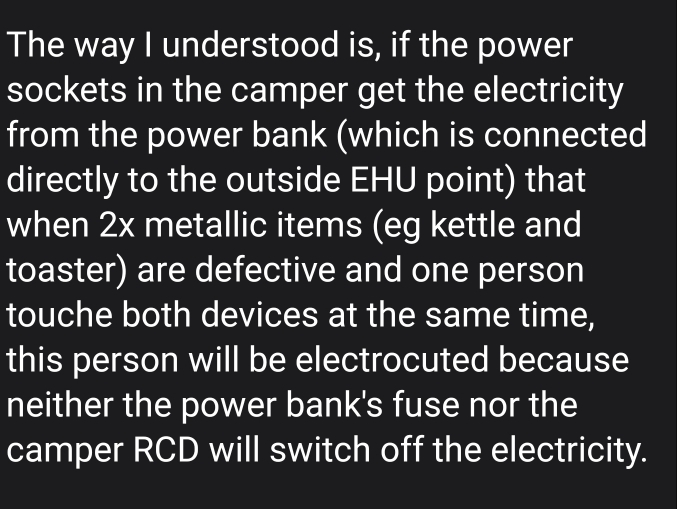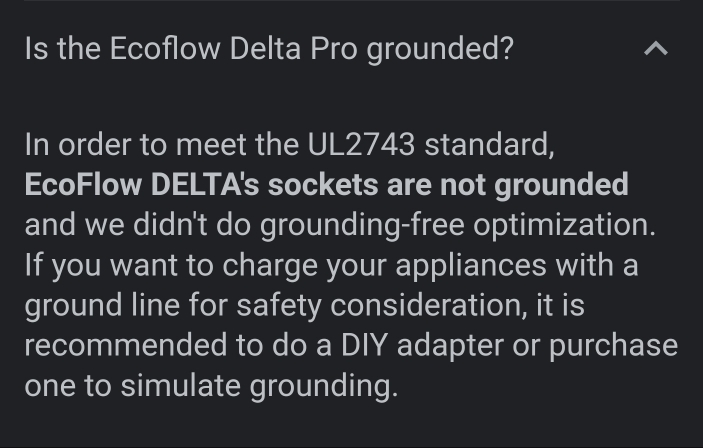Eber123
Top Poster
Lifetime VIP Member
Hello,
All the electricity in the camper is not my field of expertise - more - I think it is even rather confusing. That starts with the replacement of the AGM battery with a Licitum battery (LifePo4) and continues with the usage of the power bank.
I looked it up a wee bit and found out that the IT-Net and the TN-Net are not compatible with each other (at least not from the security point of few).
The way I understood is, if the power sockets in the camper get the electricity from the power bank (which is connected directly to the outside EHU point) that when 2x metallic items (eg kettle and toaster) are defective and one person touche both devices at the same time, this person will be electrocuted because neither the power bank's fuse nor the camper RCD will switch off the electricity.
Ok, that is not good.
But, for us, realistically is very, very unlikely to happen. Why is this?
I am in contact with EcoFlow (but it is not an EcoFlow specific issue, all power banks have the same challenge), but as expected we are not getting anywhere at the moment.
Regards,
Eberhard
All the electricity in the camper is not my field of expertise - more - I think it is even rather confusing. That starts with the replacement of the AGM battery with a Licitum battery (LifePo4) and continues with the usage of the power bank.
I looked it up a wee bit and found out that the IT-Net and the TN-Net are not compatible with each other (at least not from the security point of few).
The way I understood is, if the power sockets in the camper get the electricity from the power bank (which is connected directly to the outside EHU point) that when 2x metallic items (eg kettle and toaster) are defective and one person touche both devices at the same time, this person will be electrocuted because neither the power bank's fuse nor the camper RCD will switch off the electricity.
Ok, that is not good.
But, for us, realistically is very, very unlikely to happen. Why is this?
- We never use the 230V sockets in the camper (on hock up or not)
- We don't have any 230V devices in use in the camper
I am in contact with EcoFlow (but it is not an EcoFlow specific issue, all power banks have the same challenge), but as expected we are not getting anywhere at the moment.
Regards,
Eberhard






















